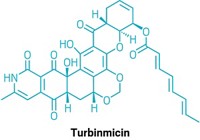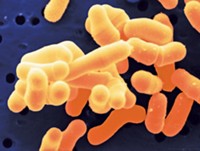Advertisement
Grab your lab coat. Let's get started
Welcome!
Welcome!
Create an account below to get 6 C&EN articles per month, receive newsletters and more - all free.
It seems this is your first time logging in online. Please enter the following information to continue.
As an ACS member you automatically get access to this site. All we need is few more details to create your reading experience.
Not you? Sign in with a different account.
Not you? Sign in with a different account.
ERROR 1
ERROR 1
ERROR 2
ERROR 2
ERROR 2
ERROR 2
ERROR 2
Password and Confirm password must match.
If you have an ACS member number, please enter it here so we can link this account to your membership. (optional)
ERROR 2
ACS values your privacy. By submitting your information, you are gaining access to C&EN and subscribing to our weekly newsletter. We use the information you provide to make your reading experience better, and we will never sell your data to third party members.
Biological Chemistry
Human stomach hosts microbial diversity
January 9, 2006
| A version of this story appeared in
Volume 84, Issue 2
The human stomach is like a churning pouch of battery acid, so it takes a hardy bacterium to live there. The most prevalent stomach microbe known, Helicobacter pylori, causes most peptic ulcers. Now, an analysis of DNA extracted from stomach biopsies of 23 patients has unearthed genetic signs of another 128 microbial species (Proc. Natl. Acad. Sci. USA 2006, 103, 732). "The work might lead to a better understanding of how the stomach's microbial communities protect us," comments principal investigator David A. Relman of Stanford University School of Medicine. It also might uncover microbes that are causative agents of still poorly understood ailments, such as inflammatory bowel disease, adds team member Paul B. Eckburg. Like the explorations of 19th-century naturalists to discover previously unknown species in faraway places, this new investigation of stomach microbiota "is an effort to see who are the parties at the table," Relman says. Next, scientists hope to learn what roles the various stomach microbes might have in sickness and in health.





Join the conversation
Contact the reporter
Submit a Letter to the Editor for publication
Engage with us on Twitter